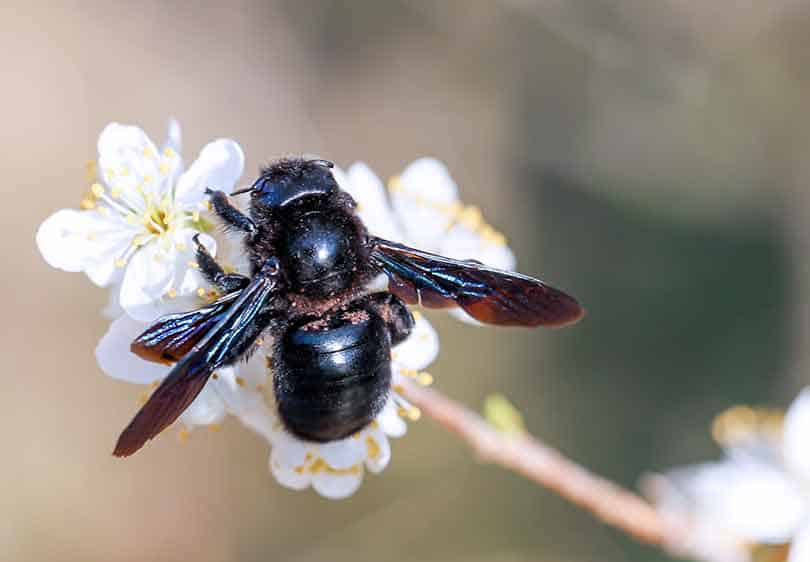Techniques in Vole Control Utah: What Works Best?
Techniques in Vole Control Utah: What Works Best?
Blog Article
Effective Pest Control Solutions for Vole Infestations

In the world of insect control, vole invasions provide a distinct challenge that demands a strategic approach. By diving right into the ins and outs of vole behavior and checking out a variety of control techniques, an extensive insect management strategy customized to these evasive creatures can be crafted. From all-natural repellents to cutting-edge trapping methods, the arsenal versus vole problems is multi-faceted.
Recognizing Vole Habits
Voles, small rats frequently discovered in gardens and fields, exhibit distinct habits patterns that are essential to understand when applying bug control steps - vole control utah. These animals are prolific diggers, developing an extensive network of passages underground where they nest, store food, and look for sanctuary from predators and inclement weather condition. Voles are herbivores and primarily prey on turfs, bulbs, origins, and seeds, making fields and yards ideal habitats for them
One trick behavior of voles is their fast rate of reproduction. Ladies can bring to life numerous trashes each year, with trash dimensions ranging from three to 6 pups. This high reproductive ability allows vole populations to quickly multiply, resulting in infestations if left unattended.
Recognizing vole habits likewise includes recognizing their patterns of activity and foraging. Voles develop surface runways in grassy locations as they take a trip in between their burrows and food sources. By observing these runways and the places of burrow entries, parasite control experts can identify high-traffic areas and tactically place traps or deterrents to successfully take care of vole populaces.
Natural Repellents and Deterrents
With an understanding of vole actions as a foundation, exploring natural repellents and deterrents becomes vital in efficiently handling vole infestations in fields and yards. In addition, including predator pee, such as that of prairie wolves or foxes, around the garden perimeter can create an all-natural obstacle that indicates danger to voles, encouraging them to remain away.
In addition, using castor oil-based repellents can disrupt vole passages as they find the odor and preference undesirable, prompting them to transfer. Mulching with materials like crushed rock, lava rocks, or crude sand can also hinder voles as they dislike excavating through these harsh substances. Carrying out a combination of these natural repellents and deterrents can aid efficiently take care of vole populaces in a lasting and non-toxic fashion, protecting plants and gardens from vole damage.
Capturing Techniques for Voles

Break traps are made to eliminate voles promptly upon activation. These traps should be placed in locations where voles are understood to travel, such as close to burrow entrances or along their paths. It is necessary to check snap catches routinely and dispose of any kind go to website of caught voles promptly to make certain the efficiency of the capturing process.
Live catches are a more gentle option for those who desire to catch voles without damaging them. When a vole is captured in an online catch, it can be safely transported to a different area and released unhurt. Live traps must be inspected regularly to stop stress and anxiety or harm to the captured voles.
When setting catches for voles, it is important to consider their habits and practices to raise the probability of success (vole control service). By using the suitable capturing methods, vole populations can be efficiently taken care of, minimizing the damage they trigger to farming and yard areas
Carrying Out Physical Obstacles
To further strengthen the defense against vole invasions, the critical implementation of physical barriers emerges as an aggressive step to protect farming and yard locations. Physical obstacles such as cord mesh, click site equipment towel, or fencings can be mounted below ground to prevent voles from burrowing right into yards or areas. Hiding these obstacles a minimum of 12 to 18 inches deep and angling them external can properly hinder voles from tunneling right into the safeguarded location. In addition, creating fencings with tiny mesh dimension at the base can prevent the voles' capacity to access the plant life over ground degree.
Additionally, making use of tree guards or trunk wraps made of steel or plastic can protect tree trunks from vole damages throughout cold weather when other food sources are limited. These guards must prolong over the anticipated snow line to stop voles from gnawing on the bark. Regular inspection and upkeep of these barriers are vital to ensure their proceeded efficiency in discouraging vole intrusions and shielding beneficial plants and plants.
Integrated Bug Management Approaches
Integrating various bug control approaches, consisting of organic controls, habitat control, and tracking, forms the basis of reliable Integrated Insect Monitoring techniques for dealing with vole problems. Biological controls entail introducing all-natural predators of voles, such as owls or serpents, to the afflicted location to help minimize vole populaces. Habitat adjustment focuses on customizing the setting to make it much less beneficial for voles, such as minimizing ground cover or eliminating food resources. Surveillance plays a critical role in Integrated Bug Management by permitting the very early discovery of vole infestations and examining the efficiency of control approaches used.
Final Thought
Finally, reliable bug control solutions for vole infestations include comprehending vole habits, using all-natural repellents and deterrents, carrying out capturing strategies, and establishing physical obstacles. Integrated bug administration methods can likewise be utilized to deal with vole invasions thoroughly. By combining these methods, property owners can efficiently handle and reduce vole populaces without content the demand for extreme pesticide use.
With an understanding of vole actions as a structure, checking out natural repellents and deterrents becomes vital in efficiently handling vole problems in areas and gardens. Implementing a mix of these natural repellents and deterrents can help properly take care of vole populations in a non-toxic and lasting fashion, securing crops and yards from vole damage.
Incorporating different insect control approaches, consisting of biological controls, environment manipulation, and tracking, forms the basis of reliable Integrated Insect Monitoring methods for dealing with vole problems. Biological controls involve presenting natural predators of voles, such as owls or snakes, to the affected area to assist reduce vole populaces (utah vole control).In conclusion, reliable insect control remedies for vole infestations entail understanding vole habits, utilizing all-natural repellents and deterrents, implementing trapping strategies, and setting up physical obstacles
Report this page